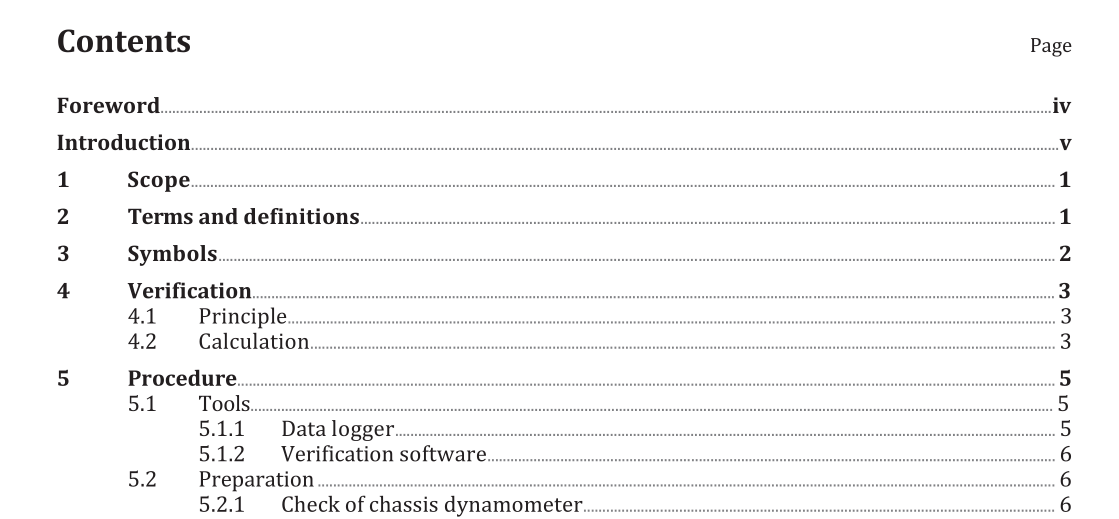BS ISO 18580:2015 pdf download.Motorcycles — Verification of total running resistance force during mode running on a chassis dynamometer
1 Scope
This International Standard specifies the verification method of total running resistance force when the exhaust gas emissions and/or fuel consumption of motorcycles are measured during mode running on a chassis dynamometer. The performance of chassis dynamometer is verified by comparing the measured total running resistance force (measured by a chassis dynamometer absorption force) and the target total running resistance force (calculated from velocity, acceleration and/or deceleration). This International Standard is applicable when the running resistance force of a chassis dynamometer is set in accordance with ISO 11486.
2 Terms and definitions
For the purposes of this document, the following terms and definitions apply.
2.1 equivalent inertia mass of motorcycle
mass obtained by adding the rotating mass of the front wheel to the total mass of the motorcycle, rider and instruments
2.2 mechanical equivalent inertia mass of chassis dynamometer
equivalent inertia mass of mechanical rotating parts of chassis dynamometer, e.g. roller and shaft and/or fly wheel
2.3 chassis dynamometer absorption force
tangential force acted on the roller surface which is calculated from a roller shaft or motor cradling torque and roller radius
Note1toentry:Thechassisdynamometerabsorptionforceistherunningresistanceforceforachassisdynamometer equipped with a mechanical flywheel equivalent inertia mass system and is sum of running resistance force and inertia force generated by motorcycles for a chassis dynamometer using the electric inertia function.
2.4 total friction loss of a chassis dynamometer
friction and aerodynamic loss of rotating parts of chassis dynamometer, e.g. bearings and roller(s)
2.5 running resistance force
rolling resistance and aerodynamic loss of motorcycle on flat surface
2.6 inertia force
force generated by inertia mass of motorcycle or chassis dynamometer during acceleration and/or deceleration
4 Verification
4.1 Principle
The equivalence between the target and measured total running resistance force is verified by the linear regression statistical analysis. Data combination of target and measured total running force shall be plotted as shown in Figure 1 and the performance of chassis dynamometer shall be evaluated from the slope and intercept of the regression line, correlation coefficient and relative standard deviation.
4.2 Calculation
4.2.1 Data sets of speed, chassis dynamometer absorption force and total friction loss of a chassis dynamometer shall be simultaneously measured during the mode running in a time series. If the total friction loss of a chassis dynamometer cannot be simultaneously measured, the total friction loss shall be determined from the relationship between speed and total friction loss which is obtained prior to the test.
4.2.2 Both target and measured total running resistance force shall be calculated from adequate data sets of speed, chassis dynamometer absorption force and total friction loss of a chassis dynamometer by Formulae (1) and (2), respectively.
BS ISO 18580:2015 pdf download
